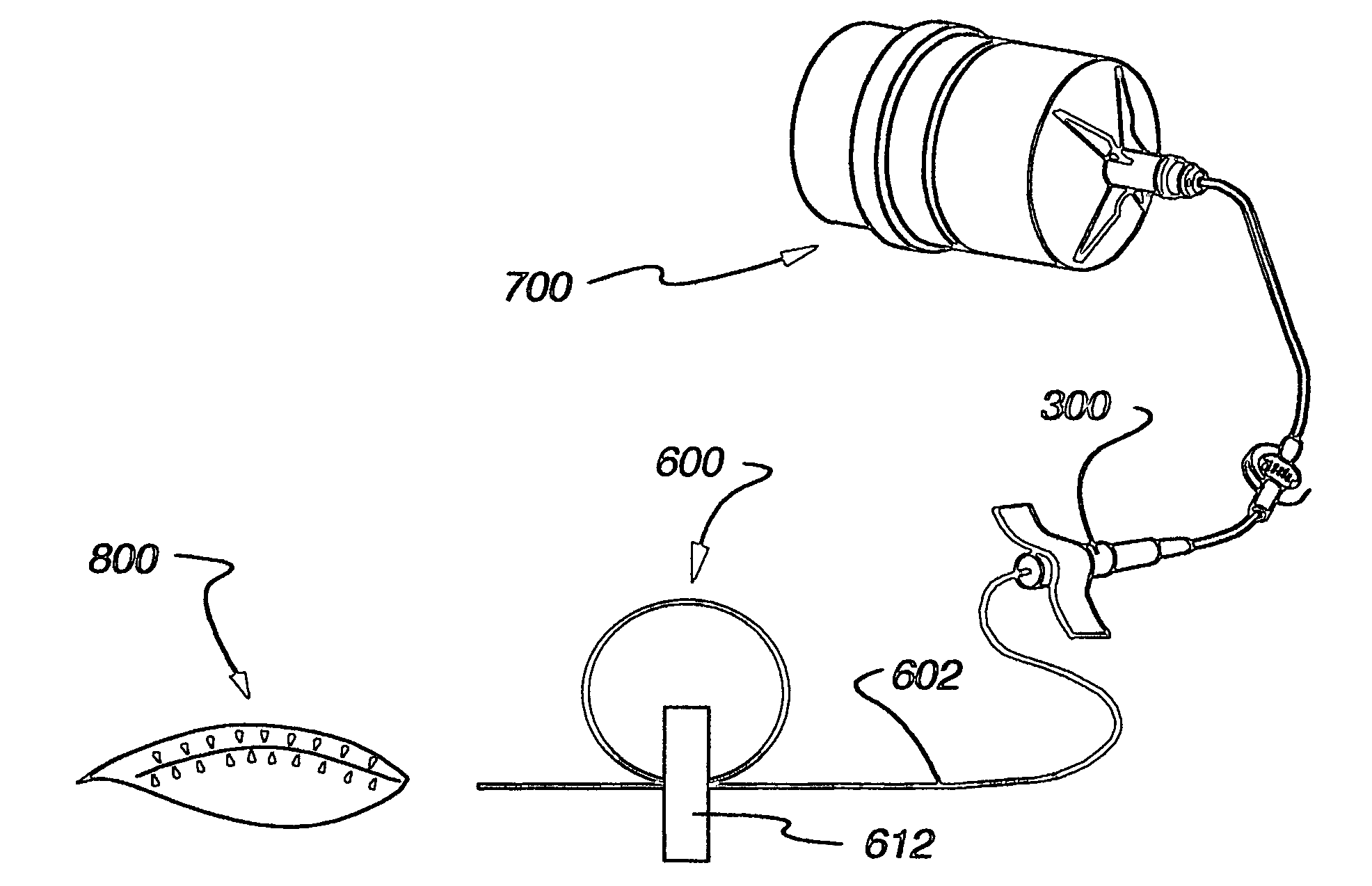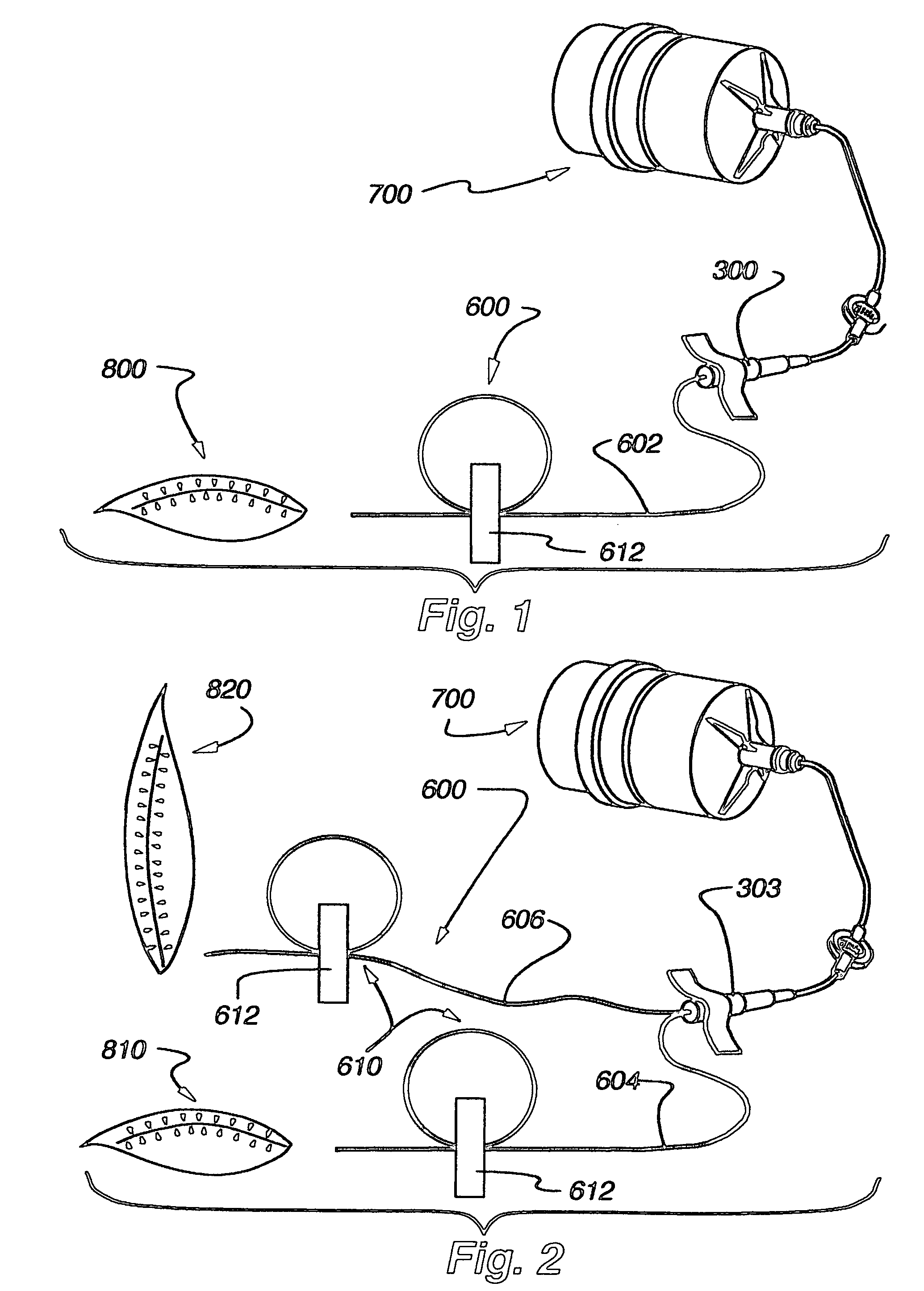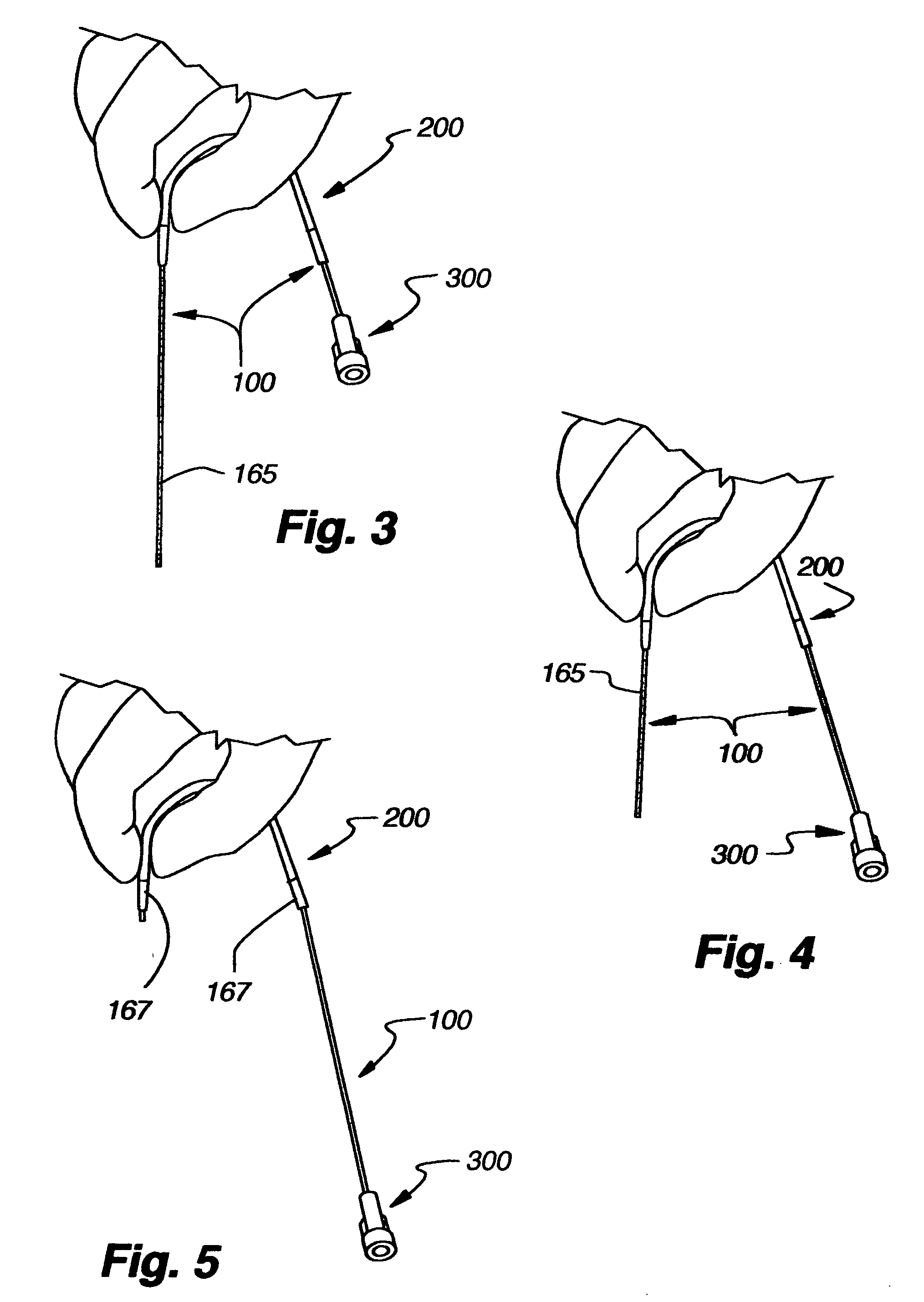An
infusion catheter that only provides a few exit holes is incapable of providing the broad fluid dispersion required in these instances.
Simply adding numerous exit holes over an extended length typically results in most of the fluid dripping from only a small number of those holes, thereby depriving adequate fluid contact to other portions of the targeted area and failing to satisfy the clinical need.
While most of these prior art devices do not perform as well as the above referenced devices (at least when delivering fluid at relatively slow flow rates) or are significantly more expensive to manufacture, they are hereby incorporated as further examples of means to achieve even fluid dispersion along an extended infusion segment in a catheter.
First, the Huss device does not provide a means for ensuring even distribution of fluid along the fenestrated catheter segment.
This is not an issue at high flow rates in the 80 cc / hr range (the intended use of the Huss device), but is an issue at the low flow rates in the 1-10 cc / hr range typically used for delivering
anesthetic agents for post-operative
pain relief.
Second, the Huss device does not provide a means for adequately sealing the sliding sheath against the catheter body.
Such a “line-to-line” fit may provide an adequate seal for short bursts of
fluid infusion in the 80 cc / hr range (the intended use of the Huss device), but will not provide an adequate seal for slow infusions that continue for hours or days.
Providing an interference or compression fit between the sheath and the catheter body is necessary to ensure a good seal, but is impractical in the Huss design because the parts could not be assembled if sized with an
interference fit.
The Huss device is relatively expensive to manufacture, due to the large number of components, the tolerances required on the components, and the processes used to assemble the components.
The manufacturing cost of the Huss catheter may be acceptable for its intended use in treating life-threatening
vascular thrombosis, where a catheter selling for hundreds of dollars or more is accepted in the marketplace, but it is not acceptable for applications such as delivery of
anesthetic agents for post-operative
pain management, where the device must be produced in the $1-10 range to be cost competitive.
This collar is twisted to tighten down on the catheter body to seal the proximal end against leakage (note the need for this feature is further evidence that the design of the sheath itself does not provide for a good seal against the catheter body).
In addition to being an added expense, the design of this collar creates a bulky component that reduces
patient comfort and convenience.
Securing the collar against the
skin could cause abrasion and
irritation to the
skin, especially if the patient is moving around and the collar rubs against the
skin.
The bulk of the collar can also be inconvenient, as any significant protrusion above the
skin surface can tend to catch on clothing, dressings,
bed linens, etc.
For several reasons, the Elsberry device is not practical for certain medical applications such as delivery of anesthetic agents to a
surgical site for post-operative
pain management.
This is impractical in a typical surgical setting because: (a) a controlled heat source or specific chemical
solvent is not normally available in the operating room, and would thus have to be specially provided at added cost and inconvenience, and (b) clinician and operating room time are typically at a premium, with high associated cost, therefore the added time needed to perform the adjustment steps is not cost effective.
However, in applications such as delivery of anesthetic agents to a
surgical site for post-operative pain management, the catheter is exposed to significant external forces during placement and removal, and also during use (especially if the patient is mobile).
A catheter of the Elsberry design, if used in these types of applications, would likely suffer inadvertent separation of the porous tube from the rest of the catheter either during use or during removal, requiring follow-up
surgery to remove the portion left inside the patient's body.
The Elsberry device is limited in the choice of materials for the second tube to those that will expand significantly when exposed to heat or a specific chemical, then return to the original shape when the heat or chemical is removed.
In the small sizes typically used for these types of applications (19-21G catheters being most commonly used),
silicone and
polyacrylonitrile will not provide an adequate combination of these properties.
Some polyurethanes are useful for catheters for these applications, but it is unlikely that the material could be optimized for both the material properties needed for these applications and the chemically-induced expansion properties needed for adjustability.
Further, the manufacturing cost for this improved catheter must not be significantly higher than the cost for the referenced Wundcath, Soaker and UniFlo prior art catheters.
 Login to View More
Login to View More 


